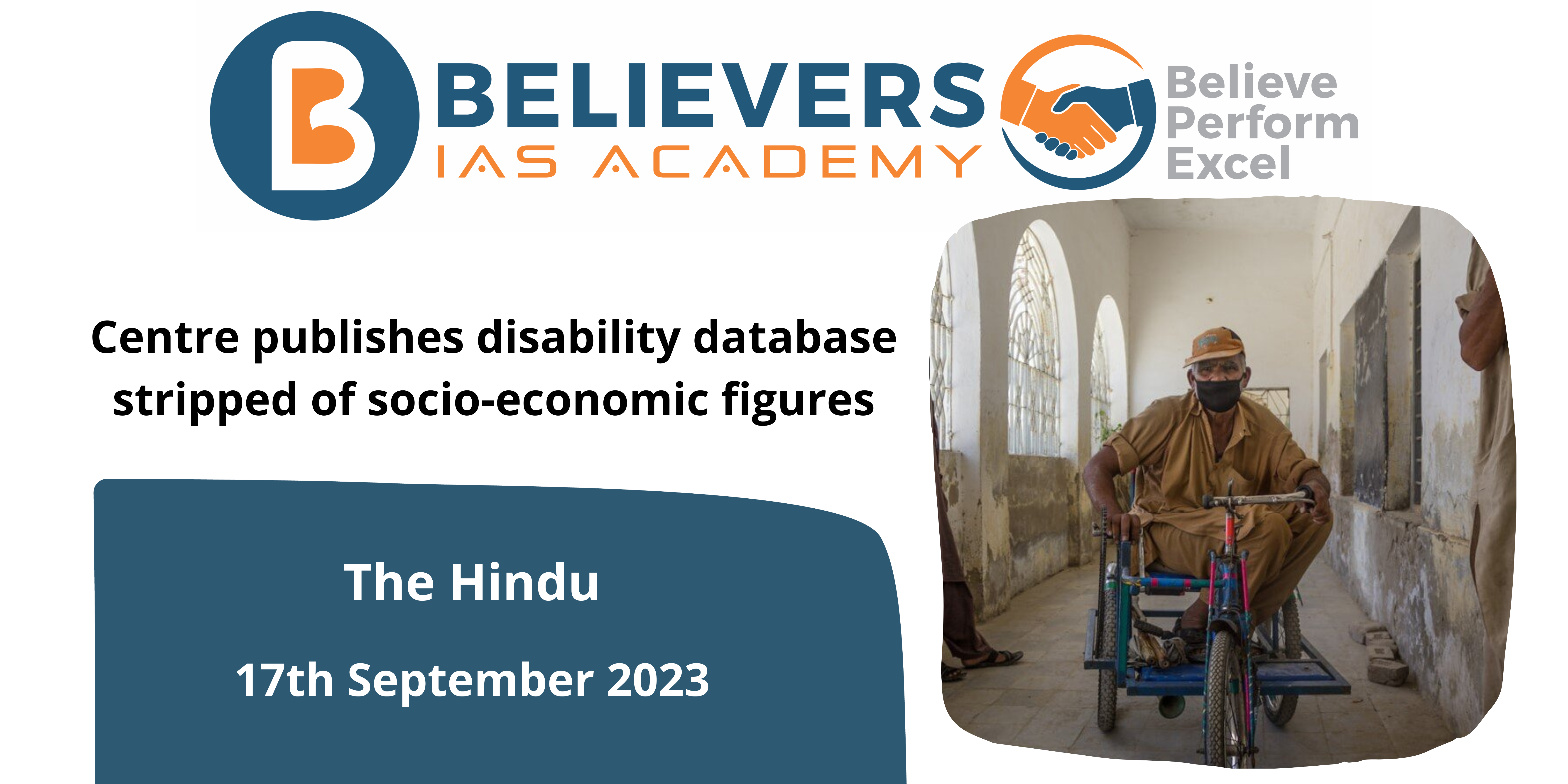Centre publishes disability database stripped of socio-economic figures
Context
According to The Hindu, the Union government is discarding whatever socioeconomic data it gathered while registering over 94 lakh Persons with Disabilities across the country for the issuance of Unique Disability ID (UDID) cards over the last six years. The Ministry of Social Justice and Empowerment justifies the action by raising concerns about the “quality” of the socioeconomic data obtained.
What are Unique Disability ID (UDID) cards?
- The Unique Disability ID (UDID) card is a government-issued document for disabled persons. For persons over the age of 18, the card is valid for life. The card must be updated every five years for children under the age of 18.
- The UDID card is used to identify and verify disabled people for various benefits. It can also assist in tracking beneficiaries’ physical and financial progress.
What was the background of UDID?
- Over the last six years, the Indian government has begun the process of registering PwDs for Unique Disability ID (UDID) cards. These UDID cards were designed to create a unified identifying system for people with disabilities while also facilitating numerous government initiatives and interventions.
What is the data collected at the time of registration of UDID?
- During the UDID registration process, socioeconomic data was collected, including information on caste, education level, employment status, income (personal and family), marital status, and more. However, these fields were made optional on the registration form.
What did the government decide to shelve the data collected during UDID registration?
- Concerns regarding Data Quality: The administration expressed concern about the quality of the socioeconomic data acquired during UDID registration. The major goal of the registration procedure, according to officials, was to collect disability-related data, and making socioeconomic areas optional resulted in incomplete and probably erroneous data.
- Low response rates: Many registrants did not fill out optional socioeconomic fields such as marital status, income, education level, and employment position. For example, just a small number of registrants disclosed their marital status, and a greater but still modest percentage disclosed their salary. Because of the low response rate, the data became less significant and credible.
- Verification Difficulties: The government stated that it had difficulty validating the accuracy of the information submitted in these optional fields. Income and marital status fields lacked a credible mechanism of validation, making the data untrustworthy for policymaking and resource allocation.
- Focus on the Disability Data: The government underlined that the major goal of the UDID registration process was to give individuals with a disability certificate that would allow them to participate in different government schemes and benefits. As a result, the government decided not to divulge the socioeconomic data, deeming it secondary to the primary aim of issuing disability certificates.
How is this going to affect the public?
- Policy Insights: In the absence of comprehensive socioeconomic data, policymakers and government agencies will have limited insights into the socioeconomic conditions of people with disabilities. This may impede the formulation and execution of customized policies and initiatives designed to address the specific requirements and challenges faced by various sectors of the PwD community.
- Challenges with Resource Allocation: Without precise socioeconomic data, it may be difficult to distribute resources efficiently to serve people with disabilities. Decisions about resource allocation, particularly funding for disability-related services, may be less informed and less customized to the unique needs of people with disabilities from various socioeconomic backgrounds.
- Accessibility and Inclusion: One of the declared goals of collecting UDID data was to persuade e-commerce companies and the education sector to promote accessibility and inclusion for people with disabilities. The lack of socioeconomic data may hinder one’s capacity to advocate for these improvements and ensure that they meet the specific issues encountered by economically poor people with disabilities.
- NGOs and Researchers: Non-governmental organizations (NGOs) and researchers working on the subject of disability rights and services may have access to less extensive data to inform their work. This may influence their capacity to plan and administer programs that successfully help people with disabilities, particularly those from disadvantaged socioeconomic situations.
Conclusion
Overall, the decision to shelve the socioeconomic data obtained during UDID registration has cast doubt on the government’s commitment to addressing the socioeconomic needs of PwDs, as well as its capacity to use data effectively for policy-making and actions in this respect.



